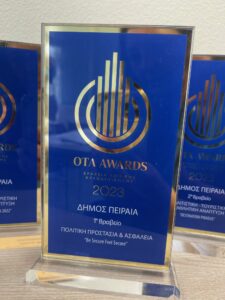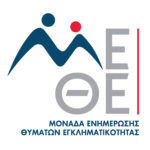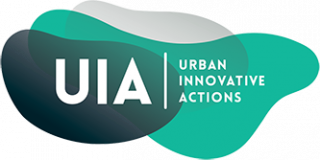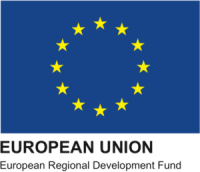We are wrapping up the last stages of the BSFS project with our Journal. As always, we look at the UIA implementation challenges that have been present for this period (January 2022 to October 2022).
Executive summary
This is the third and final Journal of the Be Secure Feel Secure (BSFS) project. Journal 1 and Journal 2 are available online on the project’s UIA webpage. Here you can have a look at these previous publications to know a bit more of how we got to this point.
Through a holistic inter-disciplinary approach, BSFS has strived to bring together diverse topics that pertain to security issues in the community of the city dwellers of Piraeus: cyber-security, governance, and spatial and social actions. In this sense, the project has had to find a balance between technological tools and “offline” action (such as the mobilization of public officials, the contact with city dwellers, and transforming spaces) to achieve its goals of improving security in the city.
Last year, one of the key actions was the creation of the Victim Support Unit. This unit is now fully operational and has reached out and served various groups, particularly women and the elderly. Throughout this year, the BSFS team has followed up on activities that took place in the earlier stages of the project (back in 2020) and continued with its activities of communication and dissemination both in Greece and with other European cities through forums and participations in conferences. This year the CURIM app was finally put at the disposal of city dwellers and public authorities. Another milestone this year was the completion of the transformation of parks and schools to reduce vandalism and crime. In the 5th district, six schools were received beatification and target hardening renovations. Eight playgrounds that were renovated.
In the following sections, we will observe the 7 UIA Challenges that are present in the project and how they evolved this year: Leadership, Public Procurement, Organizational Arrangements, Participative Approach, Monitoring & Evaluation, Communication with Beneficiaries, and Upscaling.
Partnership:
- Municipality of Piraeus
- Singular Logic SA (SLG)
- Panteion University of Social and Political Sciences – Department of Social Science – Criminology Lab
- University of Piraeus Research Center (UPRC) – Department of informatics
- European Forum for Urban Security (EFUS)
- SPACE Hellas (SPACE)
- Ministry of Citizen Protection – Police (MCP)
Challenge 1: Leadership
The effectiveness of the work structure, keeping leaders involved, chain of levels, impact of changes of leadership (if any).
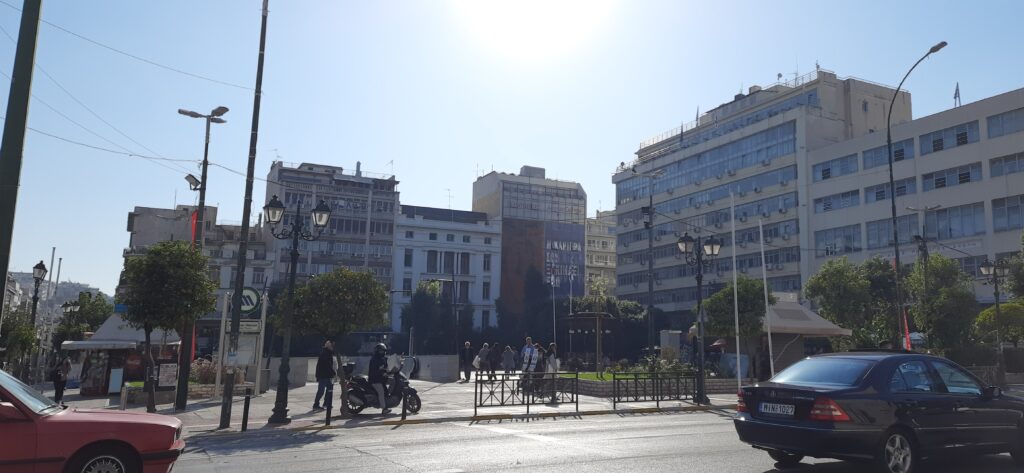
Leadership has been one of the overall positive elements; it has remained stable and engaged throughout the duration of the project.
Local authorities are keen on helping. The participation of Deputy Mayor’s has been identified by the project managers as positive, they can take action, bring in required tools, and give different perspectives on important issues, while wearing various hats – for example, the Deputy Mayor for the municipal police is now Deputy Mayor for social services, and is also involved as the chairwoman of the Local Council of Crime Prevention (LCCP). The Mayor of Piraeus has been vocal on the tangible benefits that the project has brought. The Main Urban Authority (MUA) highlights their involvement in coordinating action and aligning training activities with LCCP members who are not public servants.
The Deputy Mayor of European projects and the Deputy Mayor of Architecture have also been involved. The cooperation of the latter was essential for the beautification and target hardening of schools and the renovation of playgrounds, two outputs of the project. The involvement of people in positions of authority has been significant for the project managers to solve issues with bureaucratic processes and as reliable channels of communication. Their contribution has been crucial in terms of engaging certain stakeholders during the project.
Challenge 2: Public procurement
Engaging service providers, issues of hyper-specification, data on procurement processes, ensuring local benefits in commissioning and procurement processes (inclusion, employment, environment).
Since we are at the last stages of the project, there were hardly any new procurement processes in place. Mostly this year consisted in the fulfilling of procurement processes that took place in 2021: the acquisition and delivery of police vehicles, the renovation of public playgrounds, and the beautification and target hardening of schools.
4 cars and 2 motorcycles that were acquired were delivered by BSFS to the Piraeus police. As mentioned in the previous journal, the COVID 19 pandemic’s effects on chains of supply delayed the delivery of these vehicles by 6 months. By September 2022 the vehicles were already being used by police officers to carry out patrols -particularly in the 5th Municipal District.
Originally, the project expected to lock-down and improve abandoned buildings that are often vandalized and littered. However, the project soon faced the issue of not being able to carry out these improvements in what is considered private property -and in many cases, the owners of these buildings are impossible to contact. The MUA then decided to change course and target playgrounds and schools. The procurement for the playgrounds went smoothly and started last year, without difficulty to find the adequate providers of services and materials.
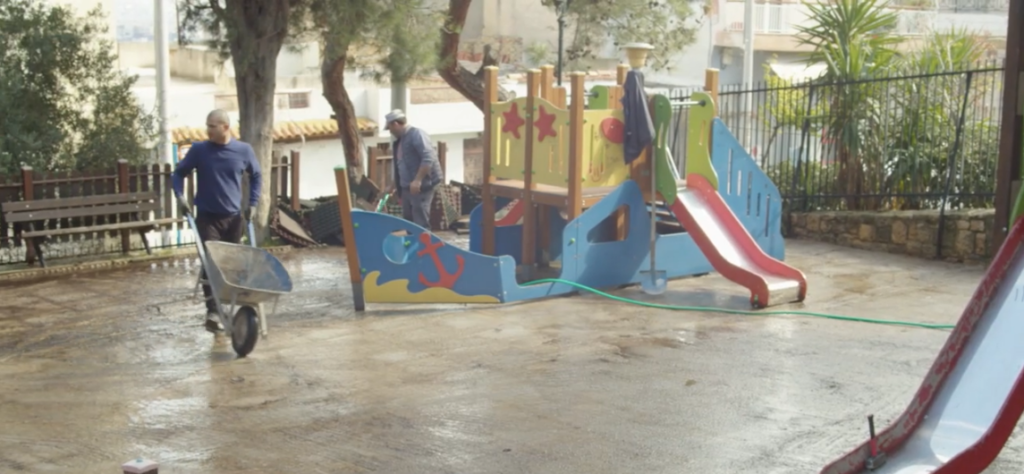
Challenge 3: Organizational arrangements
Cross-department working, effective coordination mechanisms, sharing risks and rewards across departments, role of senior management in integrating groups.
Like the “Leadership” challenge, the project has faced few challenges in terms of cross-department work and collaboration this year. There is always the problem of understaffed directories and departments and it is sometimes challenging to find people to do the extra work.
The BSFS project is mainly run by the directorate of IT in the municipality. Other departments are involved as well, but there is daily communication. This is a net positive for the CURIM and cyber security goals of the project, since it pertains mostly to the development of technology. The technical team is contained and share a common language, in a sense.
This contrasts with the “offline” parts of the BSFS project, where the pool of technical advisors, decision makers, stakeholders, and beneficiaries is more diverse.
An example on how inter-department collaboration was dealt with this year beyond IT is the improvement of public playgrounds and schools. The BSFS project had to reach out to the Deputy Major of Architecture to properly achieve this goal, since they are the ones responsible for approving and conducting actions pertaining to public infrastructure and BSFS cannot do it independently. Security is a main topic for BSFS, but not necessarily for a department dealing exclusively with public works. They had to work together to find adequate spaces to carry out the actions of physical improvement. Another factor was that the project had a limited scope when compared to the interest that the physical improvement of deteriorated spaces arose (as we will see in the following section). What appeared to be simple physical improvements became a process that was more complicated than expected and that would merit a separate project dealing with urban spaces and security on its own.
Challenge 4: Participative approach
Involving organizations and individuals, keep partners and stakeholders involved, solving conflicts, limits of shared responsibilities.
Approaching stakeholders and keeping them engaged has always been challenging. The BSFS team have done a great deal of work in engaging stakeholders, by using their own networks and promoting the project. City dweller participation was found to be more complicated.
Let’s take the LCCP as an example to look at issues of participation at the level of decision-makers. On the one hand, having various types of actors involved in a crime prevention council is positive, and scientific evidence shows the value of a multi-stakeholder approach to security. This way, a long-term strategy to improve security can involve perspectives that come not only from law enforcement. On the other hand, this means that coordination can be complicated. The LCCP has both public servants and civilians, which has required the involvement of the Deputy Mayor to coordinate agendas and maintain the group activity, not to mention that their expectations and understanding of what security is and what the priorities is heterogeneous.
Now, let’s shift to the participation issues at the level of city dwellers by looking at the CURIM app. The CURIM app has been up and running since May 2022. BSFS has launched the app along with a trailer to explain its use and has provided training for the LCCP, the IT division, and students of the department of computer science at college level. We can see that the target audiences for this training are either already involved in BSFS or are versed in IT. The complications appear when one moves towards the city dwellers who are the beneficiaries of this action but are not involved in its development.
Through various activities such as the sports events and the open info days, the MUA has communicated the activities and tools to city dwellers. One key activity for the app launch was the Dilaveri Park treasure hunt in May 2022, where city dwellers had to download the CURIM app to be able to participate. The first complication was that the app was not available for download on the Google Playstore, so the installation had to be done by sharing files locally. Despite this hurdle, people were engaged in the activity. However, the engagement was not sustainable beyond the duration of the treasure hunt. Earlier this year, the MUA expected to have a minimum of 400 users. As of October 2022, the estimate is of 100-200 users. Likewise, a new release of the app was required to correct mistakes of the previous version, which also affected rates of participation.
Beyond the situation with the app, keeping city dwellers engaged after the events is a hard task. They are usually participative and active in sports events, but it is hard to retain this level of participation once the event is over. This is because they do not see a direct tangible effect on their immediate environment or circumstances for their participation.
But this was the complete opposite reaction when the time came for the improvement of schools.
When it was announced that the BSFS project was looking for schools to physically improve, various parents, educators, and associations reached out to the MUA to express the need of these improvements in their locales. To this day, they still receive emails asking about how to benefit from such actions in their schools -messages which the BSFS team transmit to the school buildings department and they also notify the LCCP. The physical improvements in schools are clearly something that people are interested in -even if it is not always due to the dimension of security but rather to restore deteriorated spaces. Nevertheless, the goal was clear and it resonated with the needs identified by the community. Through both the spatial interventions and the anti-bullying and cyber-security seminars BSFS has created trust with schools and their principals.
As we can see, there is a stark contrast between the answer and levels of engagement towards two outputs of the project.
Challenge 5: Monitoring and evaluation
Indicators to capture achievements, enabling learning and improving, isolate and discount achieved results from external factors, measure the real added value.
As of October 2022, the final survey on fear of crime and victimization is done. We will have to wait for the results to be made public by the end of the year. This work of monitoring the project impact has been carried out by the University of Panteion. The CURIM evaluation will be carried out by the technical partners of the project.
An evaluation will also be carried out focusing specifically on the Victim Support Unit, by taking the feedback from people who have benefited from it. For the time being, 50 citizens have benefited substantially from the services of the VSU, and added to this, there are the people who have visited the unit for information.
There is also an evaluation data to be published concerning the playgrounds and the schools that were intervened. Panteion survey will take the indicators of the spaces at the beginning and compare them to data obtained in October 2022.
The spatial interventions came to fruition this year, with 6 schools and 8 renovated playgrounds in the 5th district. And while we can expect positive results from the evaluation, there are various points that come to attention that hinder the impact these strategies could have had.
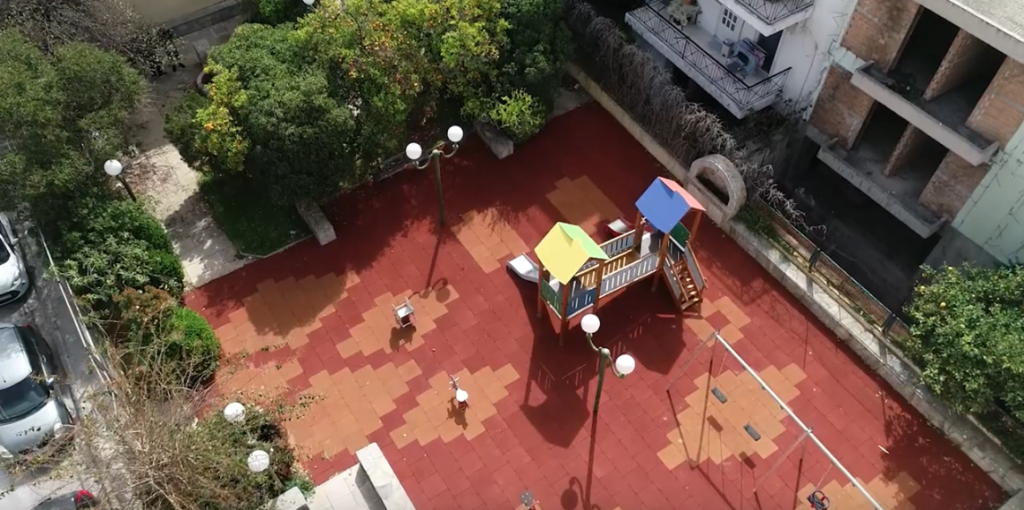
Improvement of public infrastructure is overall positive. However, if our goal is sustainable security, then cleaning, lighting, better pavement, and urban furniture are only the first steps (which have been mistakenly labelled as CPTED). For example, one of the schools in the 5th district was cleaned up and higher fences were installed, yet not long after walls were still vandalized once again.
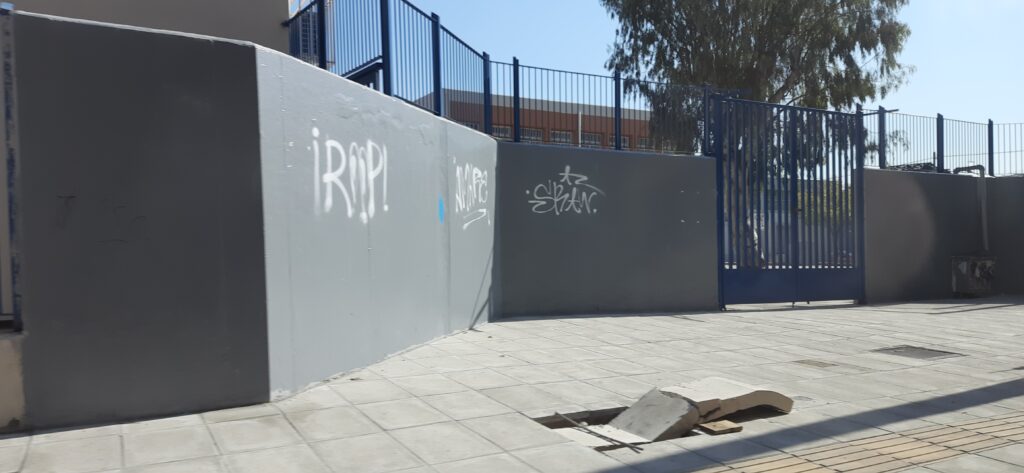
Why?
The answer can be found by looking at the physical context of the school. The building is surrounded by train tracks, abandoned buildings, and warehouses. Outside of school hours, the place is mostly unused. There are no pedestrians and regular users at various hours, who could function as eyes on the street that deter vandalism and/or crime. Therefore, while the actions taken may help to reduce breaking and entering (with high fences that are harder to climb), vandalism and incivilities still continue. For a long-term effect, it is required to take a more comprehensive strategy that analyses and transforms not only at a specific building but a complete sector and takes mobility and economic activity into account.
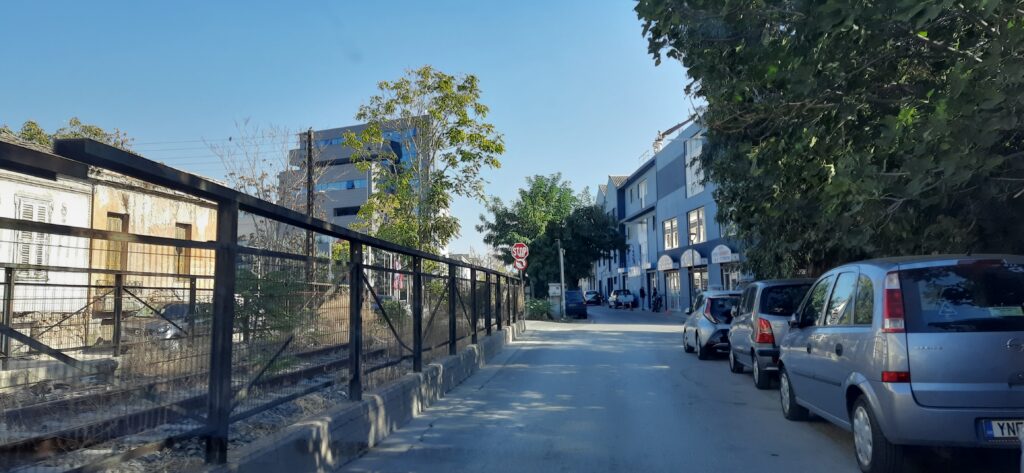
Challenge 6: Communication with beneficiaries
Communication at local level about progresses, benefits, and problems.
Since the project is at its final stages and there is more material to capitalize on, there has been a rich array of activities of communication. Tools such as the VSU and the CURIM app are in operation and now what is needed is for the city dwellers to know about their existence and use them. The MUA has used public campaigns, international awareness days, and events to make their presence known, showcase their results, and connect with users. For example, during the International Day for the Elimination of Violence against Women, the BSFS team collaborated with the VSU for an activity with the Red Cross of Piraeus. And one of the open information days was also the occasion to deliver the police patrol vehicles and have the presence of the VSU.
The VSU in particular has had an active year, carrying out activities to reach out to people. On the World Elder Abuse Awareness Day, representatives of the VSU visited Open Care Centers for the elderly of the Municipality of Piraeus and informed the staff and the members about the Unit’s services. The VSU surmises that this activity was very useful to understand the needs of the elderly and to orient them to the services they require. So rather than waiting for potential users to come to them, the unit went to them, which is important when we consider that the VSU is relatively recent, its location is not well known, and the potential users’ mobility issues. An issue that has called the attention of VSU specialists is violence against women. It is not easy for a woman in a violent relationship to leave it. Among many reasons, there is the fear of retaliation, economic dependency, lack of support networks, and lack of information. The VSU has given out information on resources for women. The VSU has also aimed at making itself visible and reachable through its presence in local radio, newspapers, and TV, and has created banners in websites of BSFS and other institutions.
As mentioned in the previous challenge, parents and principals of schools have liked the idea of seminars by BSFS against bullying in schools and are enthusiastic to repeat this experience on various schools. Recently, the MUA gave a seminar for students age 12 to 15, and they have been invited to organize sessions for those between ages 6 to 10, because it is at these ages that they are starting to get exposed more to bullying and cyber security threats.
With regards to the CURIM app, the BSFS project carried out training sessions for the LCCP, IT techs, and IT students to explain the use of this new tool. There will be other training sessions for students, which will also be useful to obtain feedback on the app’s usability.
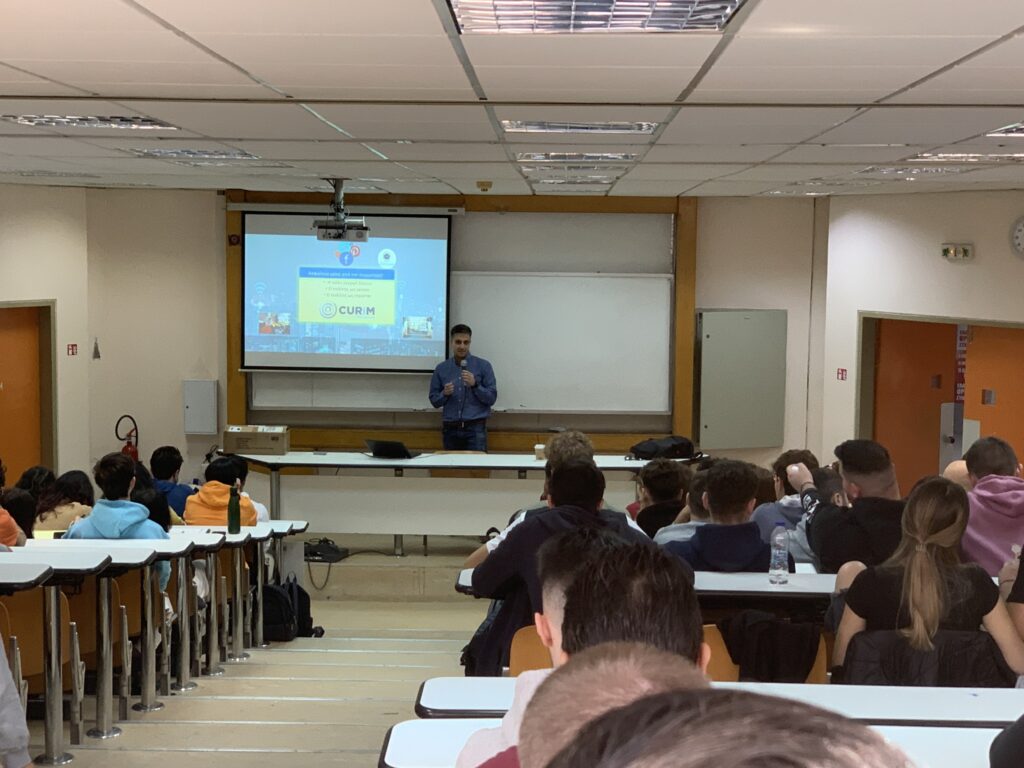
But undoubtedly outdoors activities have been essential for one-on-one contact with city dwellers. This was the case of the 2nd sports event. The first one had to be restructured due to COVID-19 lock downs (instead of a physical event, it was a Minecraft activity). The 2nd sports event took place during the Sea Days 2022 -one of the most popular festivals in Piraeus- and the activities that took place aimed to present and popularize the CURIM app, as well as to share information about the BSFS project. It included the treasure hunt in Dilaveri park, the “Feel Secure Ride in Piraeus” (coinciding with the occasion of the World Bicycle Day), and the Posidonia Running Event. However, the durability of the engagement beyond these events has been less than expected. Currently, there are discussions to further the development of a collaboration to further communication and engagement with the Olympiacos Football Club, the local football team.
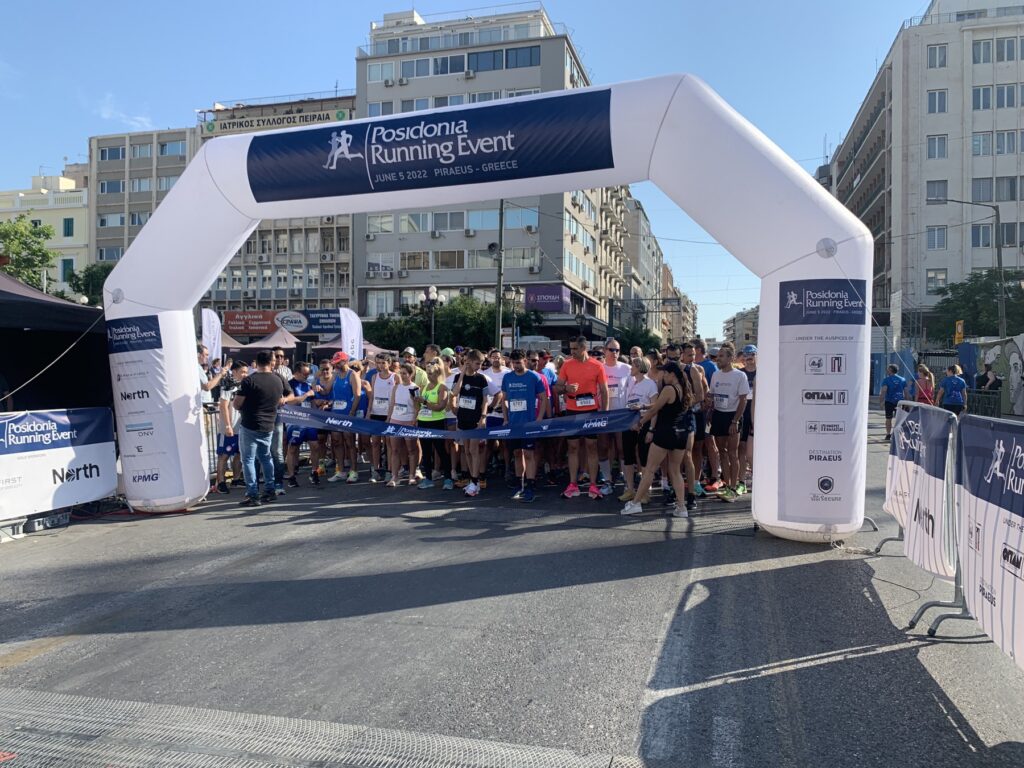
Lastly, the BSFS team carried out activities to share knowledge with local professionals and decision makers, such as conferences (online and offline) and publications. One of the project’s partners, the Laboratory of Urban Criminology of Panteion, organized a workshop to inform and sensitize professionals on participatory crime prevention policies. Two articles were published in the “Police Journal” magazine (issue #331) and the Greek security magazine “Security Manager” informing of the activities carried out this year. The UIA Expert delivered a seminar titled “Safe public spaces” in November aimed at municipal employees and local stakeholders.
Challenge 7: Upscaling
Next steps, conditions and resources needed in next iteration, role of partners in upscaling process, potential new challenges in upscaling, when should it start.
There have been discussions with the municipality to promote the project to other Greek and European cities, and even beyond.
The European Forum for Urban Security (EFUS) is the main channel for transferability. This organization has created the final practice sheets of the project. The EFUS has organized events with other projects related to security (such as ICARUS and PACTESUR) where the BSFS project has been present and has shared their insight and lessons learned. Likewise, the EFUS has organized webinars to showcase best practices and their minutes have been published and disseminated through their network. The project was also presented during a micro-seminar to key security stakeholders of the city of Gyöngyös, Hungary.
In Greece, there has been interest from authorities in Thesaloniki and the CURIM platform has been presented to them. There is interest to organize similar events to the ones in Piraeus. Official letters of interest are underway to start the relevant preparations, and to present the case of Piraeus as a success story and as an entity who can provide valuable information for a next city that may want to replicate these outcomes. In November, the BSFS received a commission of visitors from the Municipality of Puerto Montt within the framework of the International Urban Regional Cooperation, who was very interested in the solutions implemented, as well as the Minecraft and CURIM tools.
Regarding the structures that were created in Piraeus as outcomes of the project, there is enthusiasm to keep the LCCP working. Members have vouched for the utility of the council, and they wish to continue the collaboration arrangement. The LCCP will have ways to make changes because the members have direct access to the municipality, having among its members representatives of police and municipality. However, the future of the VSU is still to be clearly defined. For the moment, it is running under the IT department, but it will have to be transferred to the social services department.
Conclusion
As we approach the end of the project, we can now see most of the project outputs have come to fruition and we can now start to evaluate the project’s impact, comparing the situation at the start of the project to the current state of affairs. Evaluation is still underway, but with the data currently available we can infer that the project has had an overall positive impact. Nonetheless, we must acknowledge that this impact has been deterred by various obstacles. As we have noted in previous journals, the COVID 19 lockdowns affected the original course of action of various activities of the project, having to shift towards online instead of offline activities. And in that aspect, the project has managed to catch up this year, communicating during public events, handing out information, etc. As we have also pointed out, a non-negligible part of the project focused on the development of the technological tools, and the social and spatial actions were accessory to the project. In turn, we can observe that the impact that spatial actions could have been more meaningful if given more space.
The issues of participation have shown in two groups: decision makers and city dwellers. Throughout the project, the engagement with heads of public service and interdepartmental cooperation have had an important role in achieving the project’s goals. This is especially the case of the LCCP, this has meant that various stakeholders have been brought together to present their own perspectives of security issues and come up with a comprehensive strategy that tackles security in a multifaceted way. Likewise, we can observe that the need to bring in various stakeholders, departments, and “languages” appeared more in the development of social and spatial actions than in the development of the technological tools.
On the other hand, we have the participation of city dwellers. Contacting and keeping a community engaged for a long time is complicated. Nevertheless, there are activities and initiatives that struck a chord with the community and for which city dwellers have sought out the project initiatives, not the other way around.
A final event is planned to give closure to the project on early March 2023 and we will continue to share the project’s last developments.


